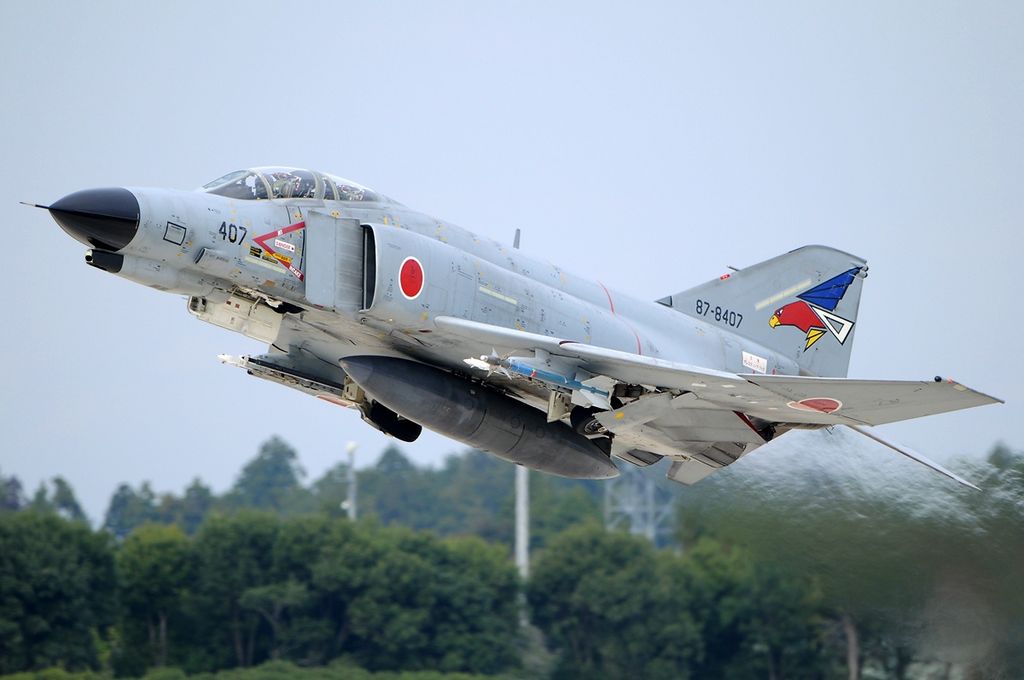In the world of aviation, few aircraft boast the storied legacy of the McDonnell Douglas F-4 Phantom II. Originally developed in the 1960s, the Phantom II has been a staple of air power across the globe. Yet, even legends evolve. Enter the F-4EJ Kai, Japan’s cutting-edge modification of this iconic aircraft, representing a new chapter in its long and distinguished history.

A Legendary Aircraft Gets a Modern Makeover
The F-4EJ Kai, a variant of the F-4E Phantom II, showcases Japan’s commitment to maintaining and modernizing its air superiority. This upgraded version of the Phantom II integrates advanced technology, extending the aircraft’s relevance well into the 21st century. Japan’s Air Self-Defense Force (JASDF) has embraced the F-4EJ Kai as a testament to their dedication to enhancing their aerial capabilities.

Advanced Upgrades for a Classic
The F-4EJ Kai’s enhancements are substantial, reflecting significant advancements in avionics and weaponry. Among the key upgrades are the installation of the J/APR-3 radar warning receiver and the J/AGM-1 electronic countermeasures system. These sophisticated systems provide improved situational awareness and defense against enemy radar and missile threats, giving the F-4EJ Kai a modern edge.
The aircraft also features the J/ASP-3 infrared search and track system, enhancing its target acquisition and tracking capabilities. The integration of these technologies enables the F-4EJ Kai to operate effectively in complex modern combat environments, bridging the gap between legacy and cutting-edge.
A Symbol of Japan’s Technological Prowess
The F-4EJ Kai is more than just a tactical asset; it symbolizes Japan’s prowess in aerospace technology and innovation. Its development reflects Japan’s strategic foresight in preserving and modernizing a proven fighter platform. The decision to upgrade rather than replace the Phantom II demonstrates a commitment to leveraging existing resources while incorporating the latest advancements.
Operational Excellence and Strategic Significance
In practice, the F-4EJ Kai excels in various roles, from air superiority to ground attack missions. Its operational versatility is complemented by Japan’s meticulous attention to detail in its upgrade process. This ensures that the F-4EJ Kai remains a formidable presence in the skies, capable of meeting the evolving demands of air defense.
The aircraft’s strategic significance is also underscored by its role in enhancing Japan’s defense posture. As regional security dynamics shift, the F-4EJ Kai plays a crucial role in maintaining Japan’s aerial dominance and ensuring the readiness of its air force.
A Future-Ready Legend
As the F-4EJ Kai continues to serve in Japan’s Air Self-Defense Force, it stands as a testament to the enduring legacy of the F-4 Phantom II. The aircraft’s successful modernization ensures that it remains a potent force in the modern era, blending the heritage of its past with the innovations of the present.
The F-4EJ Kai exemplifies how classic designs can be revitalized with cutting-edge technology, providing a glimpse into the future of aerospace innovation while honoring the achievements of the past. For aviation enthusiasts and defense strategists alike, the F-4EJ Kai represents a fascinating chapter in the ongoing saga of one of aviation’s most legendary aircraft.





